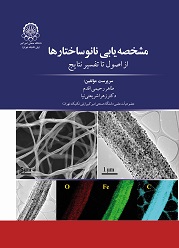Book Introduction:
In this book, the most common techniques that are used for characterization of nanostructures are discussed in six chapters. In the first chapter, an introduction to nanostructures is presented. The second chapter reviews microscopic methods including Scanning Electron Microscopy (SEM), Transmission Electron Microscopy (TEM), and Atomic Force Microscopy (AFM). In the third chapter, electron spectroscopy methods include X-ray Photoelectron Spectroscopy (XPS), Auger Electron Spectrometry (AES), Energy Dispersive x-ray Spectrometry (EDS), and Wavelength Dispersive x-ray Spectrometry (WDS) have been discussed. Chapter Four comprises Non-electron spectrometry methods, including Fourier Transform Infrared Spectroscopy (FTIR), Attenuated Total Reflection - Fourier Transform Infrared spectroscopy (ATR-FTIR), Raman spectroscopy, Ultraviolet-Visible-Near Infrared spectroscopy (UV-Vis-NIR), Diffuse Reflectance Spectroscopy (DRS), Electron Paramagnetic Resonance spectroscopy (EPR), Ultraviolet Photoemission Spectroscopy (UPS), and Photoluminescence (PL). Chapter five focuses on Thermal and thermodynamic methods consist of Thermal Gravimetric Analysis (TGA), Differential Thermal Analysis (DTA), Differential Scanning Calorimetry (DSC), Temperature-Programmed Reduction/Oxidation (TPR/TPO), Temperature-Programmed Desorption (TPD), and adsorption-desorption isotherms. Finally, in the sixth chapter, diffraction and scattering methods, including X-Ray Diffraction (XRD) and Dynamic Light Scattering (DLS) are discussed. All techniques are presented in a constant pattern, including: 1) principles; 2) instrumentation; 3) sample preparation; 4) practical applications; 5) advantages and disadvantages; 6) review questions, and 7) further reading.

